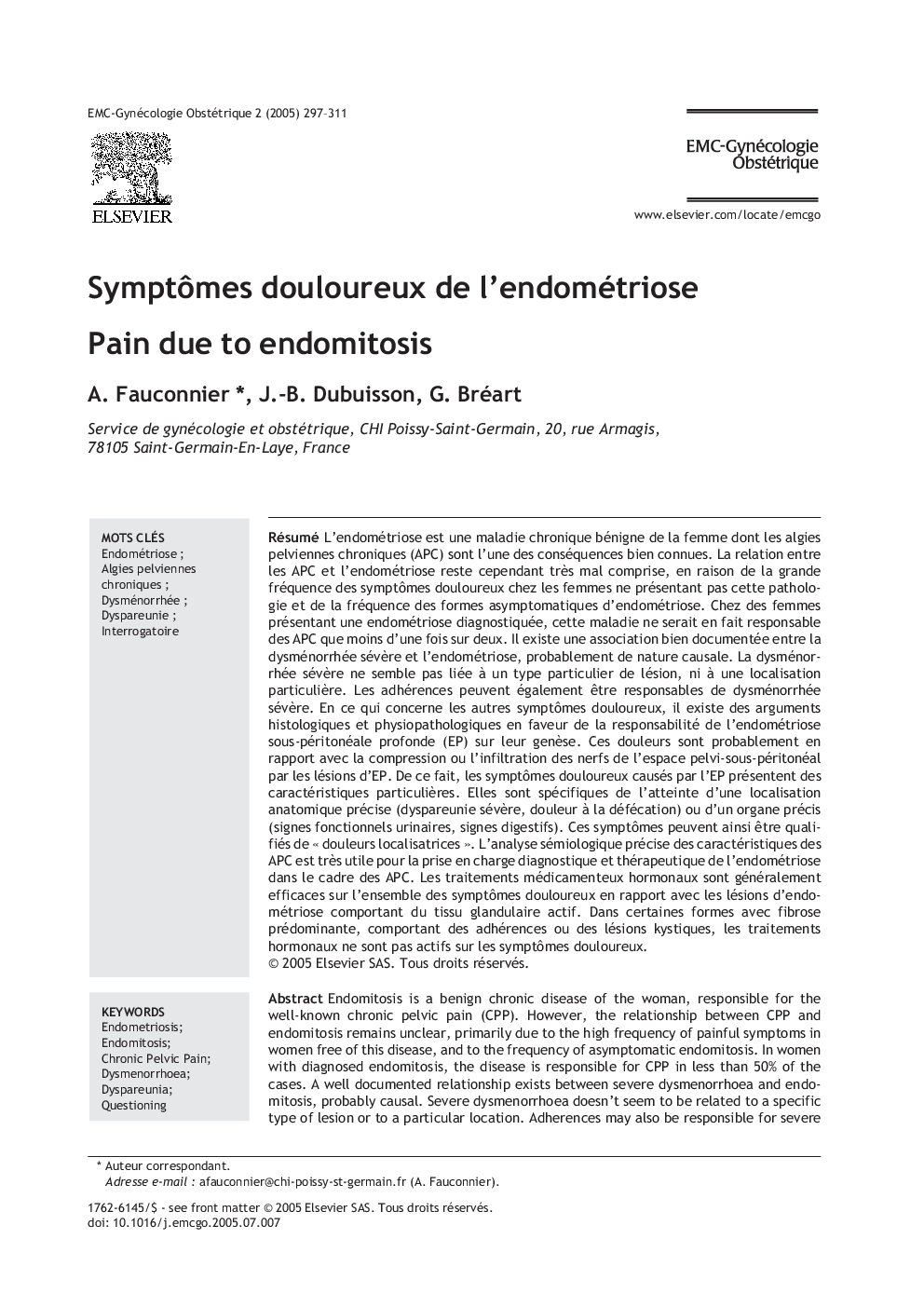| Article ID | Journal | Published Year | Pages | File Type |
|---|---|---|---|---|
| 9319158 | EMC - Gynécologie-Obstétrique | 2005 | 15 Pages |
Abstract
Endomitosis is a benign chronic disease of the woman, responsible for the well-known chronic pelvic pain (CPP). However, the relationship between CPP and endomitosis remains unclear, primarily due to the high frequency of painful symptoms in women free of this disease, and to the frequency of asymptomatic endomitosis. In women with diagnosed endomitosis, the disease is responsible for CPP in less than 50% of the cases. A well documented relationship exists between severe dysmenorrhoea and endomitosis, probably causal. Severe dysmenorrhoea doesn't seem to be related to a specific type of lesion or to a particular location. Adherences may also be responsible for severe dysmenorrhoea. Regarding other painful symptoms, histological and pathophysiological evidences suggest the responsibility of deep sub-peritoneal endomitosis (DE) in their genesis. Such pain is probably related with compression or the infiltration of the pelvis-sub-peritoneal area by the DE lesions. Therefore, painful symptoms due to DE present some specific characteristics. They characterize a precise anatomically localized lesion (severe dyspareunia, painful defecation) or organ (functional urinary signs, digestive signs). Such symptoms may therefore be qualified as “localizating pains”. The precise semiotic analysis of the CPP characteristics is very useful for the diagnostic and therapeutic management of endomitosis-induced CPP. Hormone drug therapies generally show efficacy on all pains related to endomitosis lesions that comprise active glandular tissue. In some conditions with predominant fibrosis, adherences or cystic lesions, hormone therapies have no action on painful symptoms.
Keywords
Related Topics
Health Sciences
Medicine and Dentistry
Obstetrics, Gynecology and Women's Health
Authors
A. Fauconnier, J.-B. Dubuisson, G. Bréart,
